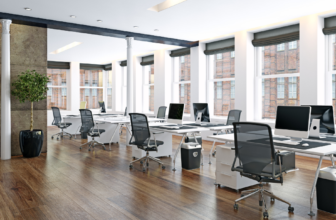
When it comes to maximizing productivity in the office, the type of lighting you choose plays a crucial role. Imagine a workspace where your energy levels are consistently high, focus is sharp, and tasks flow seamlessly. The right lighting can make this scenario a reality. But, what specific types of lighting are most effective in achieving this ideal work environment? Stay tuned to uncover the secrets behind office lighting that can elevate your productivity to new heights.
Benefits of Natural Light
Natural light is a key factor in enhancing productivity in the office. When you're exposed to natural light, it helps regulate your circadian rhythms, leading to improved sleep patterns and overall well-being. Research shows that access to natural light can increase productivity by up to 18%.
Having large windows in the office allows you to experience the benefits of natural light throughout the day. Exposure to natural light has been linked to higher energy levels and enhanced mood, reducing the likelihood of feeling fatigued or sluggish during work hours.
Furthermore, natural light can positively impact your concentration and focus. Being in a well-lit environment helps reduce eye strain and headaches, promoting a more comfortable workspace. With the right amount of natural light, you're likely to feel more alert and attentive to tasks at hand.
Incorporating natural light into your office design can lead to a more vibrant and dynamic work environment, ultimately boosting your productivity and job satisfaction.
Importance of Task Lighting
Maximizing your workspace with adequate task lighting is key to optimizing your productivity and focus throughout the workday. Task lighting is designed to illuminate specific areas where you perform tasks, such as reading, writing, or working on a computer. By providing focused light directly to your workspace, task lighting reduces eye strain and fatigue, allowing you to work more comfortably and efficiently.
Good task lighting can enhance your concentration and accuracy, as it ensures that you can see details clearly and minimizes shadows. It also helps create a defined work environment within a larger office space, giving you a sense of control over your surroundings. Having the right amount of light in the right places can significantly impact your mood and energy levels, keeping you alert and engaged.
Whether it's a desk lamp, under-cabinet lighting, or adjustable overhead lights, incorporating task lighting into your workspace setup can make a substantial difference in your overall productivity and well-being. Choose lighting fixtures that are adjustable and provide the appropriate level of brightness for your tasks to create a more conducive work environment.
Advantages of LED Lighting
When considering office lighting for productivity, LED lighting offers numerous advantages that can significantly benefit your work environment. LED lights are energy-efficient, consuming up to 75% less energy than traditional incandescent lights. This efficiency not only reduces energy costs but also contributes to a more sustainable office environment. LED lighting also has a longer lifespan compared to other types of lighting, reducing the frequency of bulb replacements and maintenance costs.
In addition, LED lights emit very little heat, keeping your office space cooler and more comfortable. This can help create a pleasant work environment, especially during hot weather. LED lighting is also known for its durability and resistance to breakage, making it a reliable option for busy office spaces. Furthermore, LEDs provide consistent and flicker-free lighting, reducing eye strain and fatigue, which can help improve focus and productivity.
Impact of Color Temperature
Considering the advantages of LED lighting in your office, the impact of color temperature on productivity is a key factor to explore next. Color temperature, measured in Kelvin (K), affects the ambiance and functionality of your workspace.
Warmer color temperatures around 2700K to 3000K create a cozy and inviting atmosphere suitable for areas like break rooms or meeting spaces. Conversely, cooler color temperatures above 3500K to 5000K are ideal for task-oriented areas such as workstations, conference rooms, and areas where focus and alertness are crucial.
Research suggests that cooler color temperatures can enhance concentration and cognitive performance, making them beneficial for tasks that require attention to detail. Additionally, higher color temperatures are known to boost energy levels, combatting midday slumps and promoting productivity throughout the day.
It's essential to strike a balance within your office space by utilizing different color temperatures based on the activities in each area, ensuring that lighting supports and enhances productivity in various tasks.




